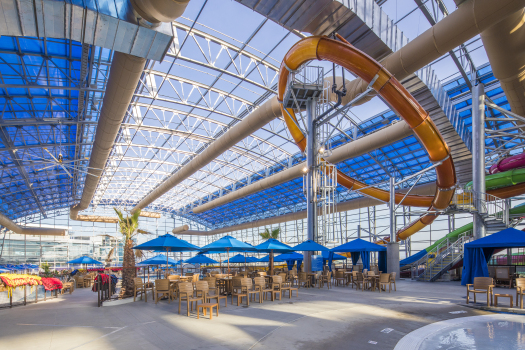Check out the latest article from Hotel News Now about how resorts look to maximize revenue with dynamic pricing models. Many thanks to Laura Koss-Feder and Hotel News Now for including H&LA’s David Sangree as a source.
Published by Laura Koss-Feder/Hotel News Now
Published date: May 5, 2022
Hotel revenue management has gone far beyond pricing guest rooms using yield management programs. Resort managers in particular have learned that they can use revenue management principles and techniques to get the most profits from food and beverage, spas, pool and golf courses.
David Sangree, president of Hotel & Leisure Advisors LLC, said for example resorts with indoor and outdoor water parks are offering day passes to non-guests to drive revenue opportunities.
“They price their day passes on a daily basis depending upon hotel occupancy and potential demand from the local community,” he said.
For instance, day-pass pricing at a Kalahari Resort or a Great Wolf Lodge may range from $40 to over $100 depending upon the day of week and time of year. During spring break, when these hotels are typically full, a limited number of day passes will be offered at a much higher price. Midweek, while school is in session, day-pass prices are much lower. Many spas also offer special packaging options midweek, combining services at a discount, Sangree said.
“Hoteliers need to think like a guest,” Samir Bhatnagar, corporate regional director of revenue optimization at Prism Hotels & Resorts, said. “By doing this, they can not only anticipate guest needs, but they can also brainstorm on how and what guests buy and where they are willing to spend. Once they identify the opportunities, they can work with their teams on how to best communicate the offerings and execute the delivery.”
For instance, Prism’s resort properties have turned poolside cabanas into a revenue opportunity, understanding that day-of-week pricing and even time-of-day pricing for rentals can generate additional income.
“We look at how we distribute the cabanas as well. Resorts even look at options that allow them to sell to non-hotel guests and give a resort experience to either locals or neighboring non-resort property guests without ever displacing direct-booking customers,” Bhatnagar said.
Prism’s properties also have added, at a premium, resort credits at dining venues. In some corporate travel hotels, Prism developed a Business Boost package that includes breakfast for one and premium high-speed internet, available for Sunday to Thursday arrivals. The add-on premium above the retail rate is equal to the regular price for breakfast.
“By having competitive offerings and encouraging prior-to-arrival commitment, we’ve seen paid-breakfast capture rates increase,” he said. “Hotels have great opportunities within the F&B space, and a little bit of effort can go a long way.”
He added: “When we look at areas in which a traditional full-service hotel or resort can generate revenue, it’s usually through the three R’s: Rooms, Restaurants and Relaxation.”
Techniques used to generate ancillary revenue include local partnerships, creative use of venues and space, and catering to the local community to generate guest experiences, he said.
“With a creative operations team that is willing to think outside the norms and a marketing team that can help generate demand, there are endless opportunities to generate revenue outside of the guest rooms,” Bhatnagar noted.
Rob DelliBovi, founder and chief executive officer of RDB Hospitality, said resorts with features such as a spa and golf course have an advantage in revenue management.
“The public generally understands that when demand increases, prices increase. Look for golf, spa and other hotel amenity pricing to be higher during the hotel’s busiest times, and conversely, look for pricing to be lower, usually in the form of promotional deals, when these other areas of our business are slower,” he said.
Golf courses, for example, are asking for more money for a morning tee time and offering great deals for an afternoon tee time, he said.
Many hotel managers are using software to maximize revenue in public spaces. DelliBovi said the best programs set up 24-hour coverage of revenue management. For example, if it is a Saturday and a hotel has seven pool cabanas available, the system should be able to monitor and change pricing when that availability decreases, he said.


